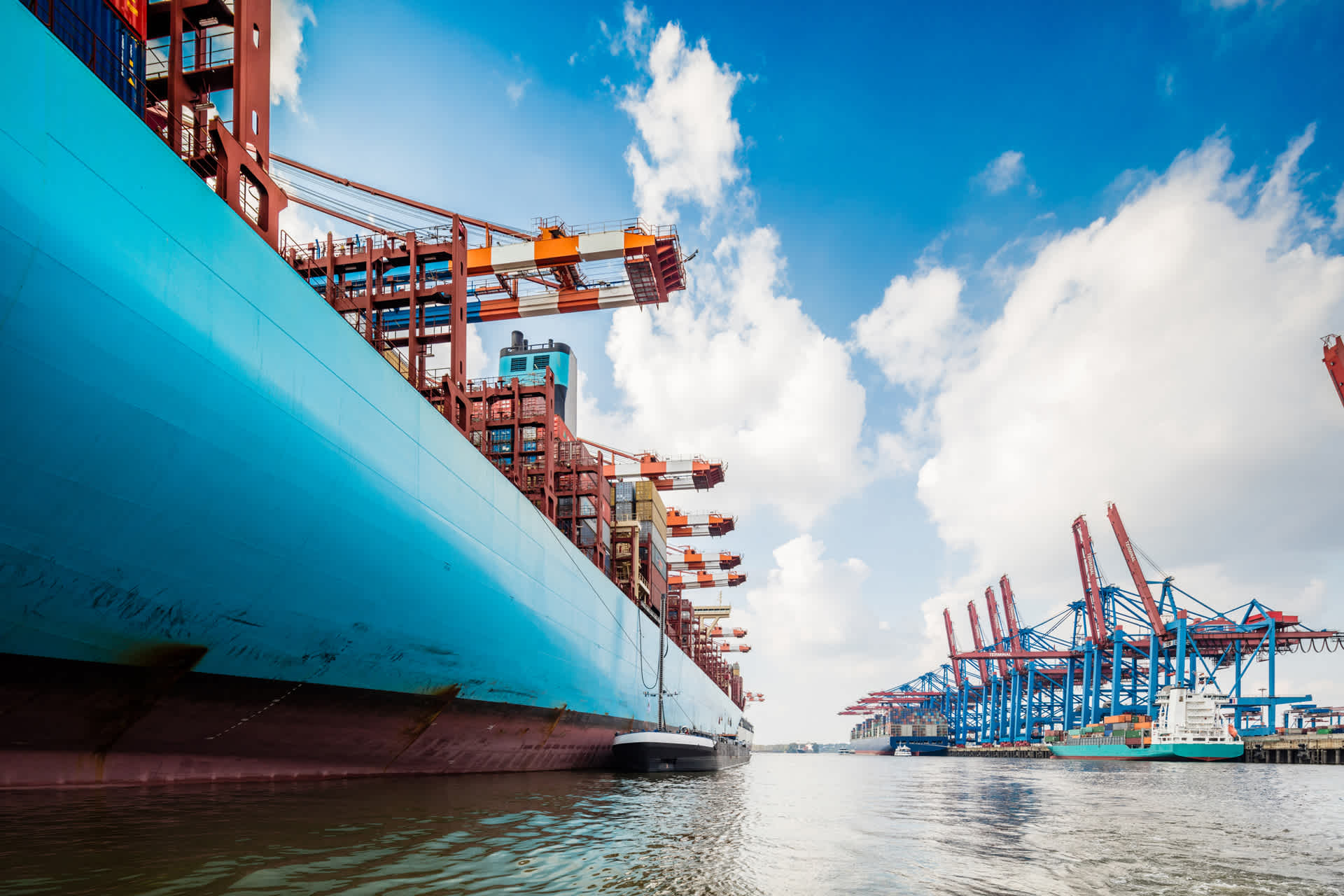Global Logistics Update
Freight Market Update: August 16, 2022
Ocean and air freight rates and trends; customs and trade industry news plus Covid-19 impacts for the week of August 16, 2022.
Freight Market Update: August 16, 2022
European Freight Market Update Live | Tuesday, August 23 @ 16:00 CEST / 15:00 BST
North America Freight Market Update Live | Thursday, August 25 @ 8:30 am PT / 11:30 am ET
Ocean Freight Market Update
Asia → North America (TPEB)
- Rates continue their downtrend, along with volume and demand. The standard cyclical peak season appears to be pushed off, yet Transpacific Eastbound (TPEB) volume is projected to decline through the end of the year due to over-ordering and low demand. Despite more favorable rates, the percentage of blank sailings, port congestion and US intermodal delays continue to affect schedule reliability.
- Rates: Rates remain soft in many major pockets.
- Space: Open, except in a few pockets.
- Capacity/Equipment: Open, except in a few pockets.
- Recommendation: Book at least 2 weeks prior to cargo ready date (CRD). For cargo ready now, importers might consider taking advantage of currently available space and softer floating market rates.
Asia → Europe (FEWB)
- There is no peak season and demand has been slowing down. Supply is still relatively tight due to the large amount of blank sailings, vessel sliding, and port omissions. The port congestion in Europe, particularly Hamburg and Rotterdam, has reached critical levels causing further delays and late return of vessels to Asia. There are indications of power cuts in Ningbo (Zhejiang province) which would affect production output but there is still no official information available.
- Rates: There is continued rate pressure on spot rates due to lower demand.
- Capacity/Equipment: Space is available but it is impacted by additional blank sailings and delays due to the port congestion in Europe.
- Recommendation: Allow flexibility when planning your shipments due to anticipated congestion and delays.
Europe → North America (TAWB)
- Demand for the whole month of August is expected to be lower due to some European factories closing from late July until mid-August (majority out of the MED area). Anticipate a high return of demand beginning in September. Congestion on the U.S. West Coast (USWC) has gradually improved but we are now seeing slight worsening at some U.S. East Coast (USEC) ports.
- Rates: Stable at high levels. No sign of steep rate decline in the near future. Some drop on FAK levels in Italy and Greece.
- Space: Still very tight on the USEC with some space open of direct routing to the USWC.
- Capacity/Equipment: Equipment availability remains the biggest challenge for all EU origins, particularly in the Mediterranean region. Low empty stacks at inland depots, prioritize pick up from the Port of Loading.
- Recommendation: Book 4 or more weeks prior to CRD. Request premium service for higher reliability and no-roll.
Indian Subcontinent → North America
- Rise of equipment shortages being reported as carriers struggle to reposition equipment to Inland Depots and smaller ports.
- Rates: largely unchanged across key port pairings but remain elevated from pre-covid levels.
- Capacity/Space: Space is available across most lanes at standard (non-premium) rates. Some service level issues are arising due to U.S. East Coast (USEC) port congestion and disruptions in the EU.
- Equipment: Rising equipment deficits are being reported across India, particularly in smaller ports and inland container depots (ICD).
- Recommendation: Take advantage of declining rates. In the past carriers have implemented blank sailings to avoid underutilization. This could lead to increased rates on the horizon.
North America → Asia
- USEC ports continue to see challenges with vessel congestion and some vessel strings still omitting Charleston and Savannah entirely. Erratic vessel schedules continue to cause significant challenges with changes in posted earliest return dates and vessel cut-offs at the port. For U.S. West Coast (USWC), arrivals and available capacity remain fluid.
- Rates: No GRI’s announced for September.
- Capacity/Equipment: Deficits on containers and chassis continue to plague Inland Port Intermodal (IPI) origins. Chicago has been the most reliable. Availability for standard equipment has not been an issue for most ports. Capacity from the US Southeast to India remains constrained due to continuing port omissions for Charleston and Savannah. Overall capacity for India ports requiring a transshipment service remains very tight in particular from the USWC.
- Recommendation: Please place bookings 4 weeks prior to vessel Estimated Time of Departure (ETD).
North America → Europe
- Congestion issues persist in Europe due to local labor actions at baseports in Germany, the Netherlands, and the UK. The port of Houston continues to experience significant capacity constraints due to schedule delays and port congestion with one service still reduced running from weekly to biweekly. USWC service to Europe remains extremely tight due to void sailings and skipped ports caused by systematic delays. USWC coverage for Mediterranean ports now has reduced capacity due to one string being phased out.
- All carriers continue their booking stop for shipments to Ukraine, Russia, and Belarus.
- Rates: There is one GRI announced so far for September targeting US Gulf origins.
- Capacity/Equipment: USEC service to Northern Europe has capacity available. Vessel capacity from the port of Houston has been very tight due to a significant increase in demand and delayed vessels. Deficits are still plaguing many IPI origins. Availability for standard equipment at ports has not been an issue, but special equipment is hard to come by.
- Recommendation: Please place bookings 3 to 4 weeks in advance for East Coast/Gulf sailings and 6 weeks for Pacific.
North America Vessel Dwell Times

Air Freight Market Update
Asia
- N. China: Demand in the market is slow, leading to rate decreases. In the Far East Westbound (FEWB) market, airlines continue to maintain lower flight frequencies to Frankfurt due to airport handling restrictions and are offering more flights to Amsterdam at lower rates.
- S. China: The market demand remains soft for both TPEB and FEWB lanes and rates are stable. Shenzhen - Hong Kong (SZX-HKG) cross border operations continue to be affected by Covid surges and a capacity quota reduction however operations are slowly starting to improve. Transit times for affected shipments are expected to be prolonged by 2-3 days.
- Taiwan: The market is stable with rates and capacity maintaining at steady levels. Passenger demand to San Francisco (SFO) and New York (JFK) is picking up which is leading to a decrease in cargo capacity and payload.
- Korea: The market ex-Korea remains the same as the week prior and rates are slowly returning to pre-pandemic levels. The fuel surcharge (FSC) is expected to decrease in August as global oil prices stabilize.
- SE Asia: Demand in the Southeast Asia region continues to be soft with rates maintaining at similar levels. Some carriers continue to cancel flights from Vietnam due to the low demand in the market.
Europe
- Lower summer demand levels continue in Europe. Demand is expected to pick up slowly from mid-September.
- Transatlantic capacity ex European hubs remains strong, helping maintain lower rate levels while fuel price remains high.
- Disruption and delays might still occur in major European hubs. Contingency plans are in place to avoid significant issues.
- Build pallets below 160CM to increase possibilities of better uplift options and rates on passenger aircraft capacity.
- For all trade lanes, continue to place bookings early to secure best uplift options and routings.
Americas
- Export demand remains steady from all markets.
- US airports are running at a normal pace.
- Capacity is opening up further, especially into Europe, where most carriers have increased the number of passenger flights for their summer schedules.
- Shipments into Europe could experience additional destination dwell time due to the labor shortages in some western European hubs.
- Rates remain stable week over week.
- A heavy travel season in and out of Canada is putting a strain on the infrastructure of major airports (YYZ and YVR) which is having a trickle-down effect on cargo operations. This is resulting in longer than normal dwell times for both import and export cargo.
- Air Canada has announced they are gearing up to add additional flights out of all major gateways. These flights are likely to include both passenger and freighter options.
Trucking & Intermodal
Americas
US Import/Export Trucking: Market Trends
- Congestion continues at the Montreal and Toronto terminals and inland ramps. The volume coming into Toronto continues to surge, while the number of drivers continues to decrease, which translates into less drivers handling more volume and creating the previously mentioned congestion.
- Chassis shortages continue to persist, notably in Chicago, NY/NJ, Memphis (95% utilization, 10+ day street dwell time) and in LA (10.4 day street dwell for 40’).
- East coast and gulf congestion will continue through August, with vessels at anchor in New York, Norfolk, and Savannah—36 ships at the end of July awaiting berths with wait times in the 7-10 day range.
- LA/LB and Oakland have deteriorated, in part due to AB5 strike action—Oakland is seeing 19 day terminal dwell times and LA/LB are averaging 7.9 days.
- Highway Diesel fuel prices are dropping but remain well above the start of year
- East Coast ($5.30/gallon), Midwest($5.24/gallon), and Gulf Coast ($4.91/gallon)
- West Coast ($5.98/gallon), California ($6.39/gallon) and Rocky Mountain($5.39/gallon)
- British Columbia, Quebec and Ontario (~$7.44 CAD/gallon)
US Domestic Trucking: Market Trends
- The domestic FTL market has been suffering from the inventory glut with the highest inventory/sales ratios in history, global inflation, record high diesel fuel prices, and most recently the sharp drop in container imports.
- Tender rejections by carriers has decreased by 67% YoY from 22.8% to 7.4%, meaning carriers are accepting more loads due to having more capacity.
- Spot rates in the market have bottomed out to a 16-month low, down ~35% YTD. Contract rates fell in recent weeks after an increase for the past several months due to FSC schedules.
- Load-to-Truck ratios are down ~30% YoY, which is the key barometer for supply/demand in the marketplace.
- Tender volumes from customers are down 20% YoY.
- Diesel prices have pulled back slightly from all-time highs as we move past the summer peak season.
Customs and Compliance News
CBP Issues New Withhold Release Order
U.S. Customs and Border Protection (CBP) recently issued a new Withhold Release Order (WRO) prohibiting the importation of garments made wholly or in part by Natchi Apparel (P) Ltd. in India. The WRO was published on CBP’s Withhold Release Orders and Findings List and entered into effect on July 29. Importers of shipments detained under the WRO will have 90 days to export the merchandise or contest the detention based on evidence that the subject products were not produced with forced labor.
FMC Seeks Public Comment on Issuance of Emergency Order
The Federal Maritime Commission (FMC) published a Request for Information on August 15. The Request seeks public comment on whether congestion of the carriage of goods has “created an emergency situation causing substantial, adverse effect on the competitiveness and reliability of the international ocean transportation supply system.” Comments may be submitted by email to secretary@fmc.gov, on or before September 14, 2022.
Factory Output news
- Vietnam: Samsung to start manufacturing semiconductor parts in Vietnam in 2023. Source
- Malaysia: Ferrotec begins construction of a new semiconductor manufacturing factory in Malaysia. Source
- Singapore: Davao, Philippines fruit exporter signs agreement with Singapore. Source
- India: Free trade agreement discussions between India-UK aim to be concluded by October. Source
- Pakistan: Preferential Trade Agreement (PTA) signed between Pakistan and Turkey. Source
Freight Market News
Container Spot Rates Quickly Declining
According to The Loadstar, container spot rates are steeply declining on all export routes from China during a historically high season for demand. As average wait times at Los Angeles and Long Beach terminals drop to three days, spot rates are seeing a dip across both US east coast and west coast ports. Ocean carriers will likely look to blank as much capacity in coming period to maintain the supply and demand balance.
Port Projects Receive Almost $57M in Infrastructure Grants
The US federal program “Rebuilding American Infrastructure with Sustainability and Equity” (RAISE) has awarded almost $57M in grant money to increase intermodal rail capacity at select ports and develop inland ports with capacity for rail switching. Read more about the specific grant projects at FreightWaves.
Flexport Research Updates
Our latest update shows the potential for consumers’ preferences for goods over services, adjusted for inflation, to fall to April 2020 levels by September 2022 after a prolonged period of elevation. The main driver is a downturn in nondurables preferences, while durables will only dip slightly below summer 2020 levels by September.
Weekly Economic Report: Up, Down, or Sideways
This past week offered two detailed reports on the state of U.S. inflation, the Consumer and Producer Price Indices. Lower numbers cheered analysts and investors, but were they looking at the right numbers? We sort it out.
Also a reminder: the weekly economic report is now its own newsletter! You can sign up here to have these insights delivered directly to your inbox each week.
Air Timeliness Indicator: TPEB ↓ @ 10.7 days, FEWB ↓ @ 8.9 days.
Ocean Timeliness Indicator: TPEB ↓ @ 89 days, FEWB ↑ @ 91 days.
- US: In the latest update consumer confidence improved modestly, but remains near its historic low. Ocean shipping times at origin have hit their lowest since January 2021, while shipping rates are steadily declining.
- EU: In the latest update we find that the real (inflation-adjusted) value of EU imports fell by 6.5% year over year. The time taken for the first stage of ocean shipping from Asia to the EU fell to the lowest since January 2021, while shipping rates fell to their lowest in 12 months.
Freight Market Update is a complimentary service from Flexport, the modern freight forwarder. If you're not already a subscriber, we invite you to subscribe here.
Please note that the information in our publications is compiled from a variety of sources based on the information we have to date. This information is provided to our community for informational purposes only, and we do not accept any liability or responsibility for reliance on the information contained herein.


